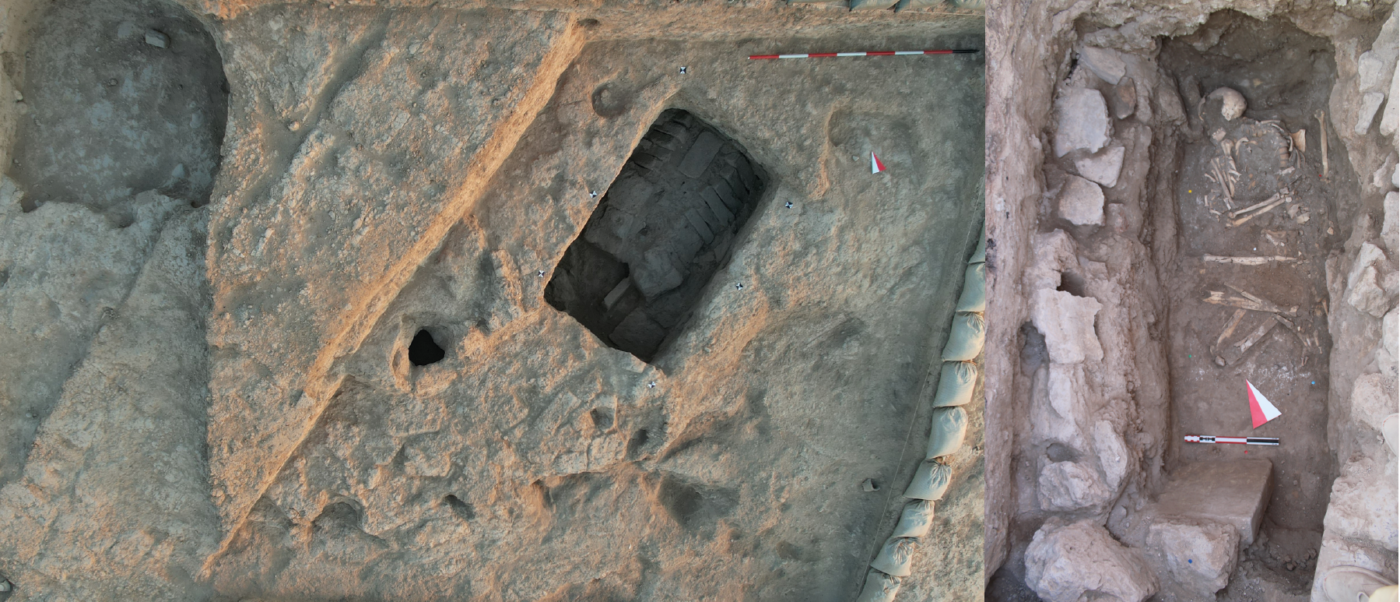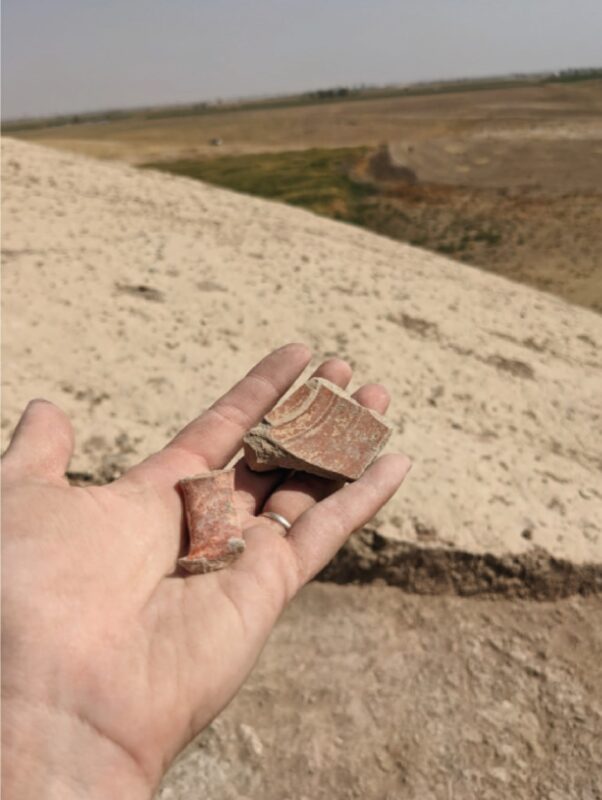Step trench A
A long sequence from the Early Bronze Age to the Hellenistic period
The excavation of a stratigraphic trench on the southern slope of the mound uncovered a sequence of buildings and installations dating to the final phase of the Early Bronze Age (3rd millennium BCE), a series of structures from the Middle and Late Bronze Age (c. 1800-1300 BC), and an occupation from the Late Achaemenid/Early Hellenistic period (4th – 3rd century BCE) to the Seleucid period (end of 4th – mid 2nd century BCE) and Parthian (mid 2nd century BCE – mid 3rd century CE) on the top of the site. The Early Bronze Age settlement is located at the foot of the main hill, where remains of a building and a large industrial area characterized by ceramic production kilns have been uncovered. The industrial area was later reoccupied with the construction of a building, of which a room has been brought to light. This room features an earthen floor and is enclosed by mudbrick walls measuring 1.20 m in thickness. The Early Bronze Age occupation is covered by a terracing operation, on which beaten earth floors are directly superimposed. Due to the presence of hearths, this is interpreted as part of an open-air working area dated to the second half of the 2nd millennium BCE (Late Bronze).
Subsequently, this slope of the hill was abandoned until the end of the 1st millennium BCE (Late Achaemenid/Early Hellenistic period), when an additional terrace was constructed, serving as the foundation for a domestic building. Excavations have revealed the remains of two adjacent rooms, which were used during multiple phases, as evidenced by the superposition of three successive floor levels. Under the latest floor plan, a rectangular trench burial was found, covered and lined with mudbricks, with an adult male individual lying curled up on his right side, accompanied by a single cornelian pearl.






































